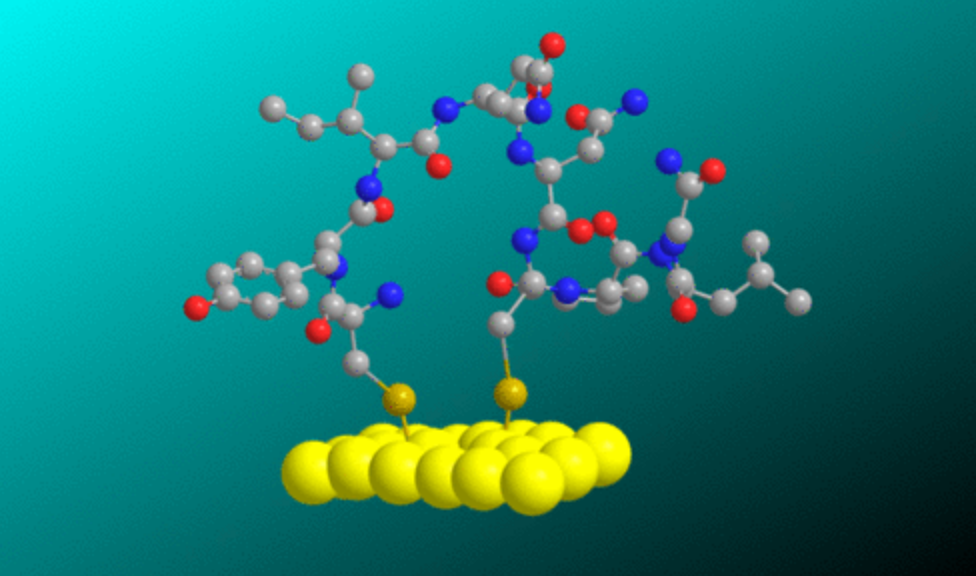Peptides are very common recognition entities that are usually attached to surfaces using multistep processes. These processes require modification of the native peptides and of the substrates. Using functional groups in native peptides for their assembly on surfaces without affecting their biological activity can facilitate the preparation of biosensors. Herein, we present a simple single-step formation of native oxytocin monolayer on gold surface. These surfaces were characterized by atomic force spectroscopy, spectroscopic ellipsometry, and X-ray photoelectron spectroscopy. We took advantage of the native disulfide bridge of the oxytocin for anchoring the peptide to the Au surface, while preserving the metal-ion binding properties. Self-assembled oxytocin monolayer was used by electrochemical impedance spectroscopy for metal-ion sensing leading to subnanomolar sensitivities for zinc or copper ions.

Peptides are very common recognition entities that are usually attached to surfaces using multistep processes. These processes require modification of the native peptides and of the substrates. Using functional groups in native peptides for their assembly on surfaces without affecting their biological activity can facilitate the preparation of biosensors. Herein, we present a simple single-step formation of native oxytocin monolayer on gold surface. These surfaces were characterized by atomic force spectroscopy, spectroscopic ellipsometry, and X-ray photoelectron spectroscopy. We took advantage of the native disulfide bridge of the oxytocin for anchoring the peptide to the Au surface, while preserving the metal-ion binding properties. Self-assembled oxytocin monolayer was used by electrochemical impedance spectroscopy for metal-ion sensing leading to subnanomolar sensitivities for zinc or copper ions.
